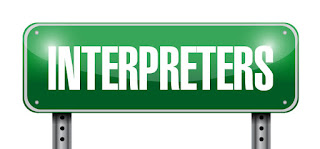Demand for sign language interpreters is skyrocketing all across the United States. The only question is, how do you become a sign language interpreter?
Here at Languagers, we are constantly looking to build relationships with new sign language interpreters. Here, we’ll, therefore, look at what basic credentials you need to become an ASL interpreter who can help us serve our ever-growing list of clients.
To Be a Sign Language Interpreter You Need a College Degree
At present, there are hundreds of freelance sign language interpreters in America, many of whom do not have a college education. This being the case, we should make it clear that it is not absolutely essential to attend university to train to be an ASL interpreter. However, having a college degree is advisable.
At Languagers, most of our businesses and government agency clients do require that our interpreters have a college education. Anyone thinking about becoming a sign language interpreter should, therefore, consider studying for a relevant Associate’s or Bachelor’s degree.
Where Can I Study to Become a Sign Language Interpreter?
When looking to study to be an ASL interpreter, it is advisable to look for BA/BS American Sign Language/English Interpreting degree programs at universities that specialize in deaf studies.
As of 2020, several American universities offer a comprehensive range of suitable degree programs. These include Western Oregon University, Florida State College, and the University of Arkansas at Little Rock.
For a full list of recommended universities and programs, click here.
While studying, aspiring interpreters are also advised to familiarize themselves with the Conference of Interpreter Trainers (CIT). This is a body that promotes standards in the ASL translation industry and offers interpreters the opportunity to network at biennial conventions.
Gaining Official Sign Language Interpreter Certification
When you complete your Associate’s or Bachelor’s Degree, you won’t immediately quality as a certified ASL interpreter. Instead, it is advised that new graduates gain practical interpreting experience. One way to do this can be to become a visiting interpreter at deaf schools like Gallaudet University.
Once you feel confident in your ability as an ASL interpreter, it will be time to take the National Interpreter Certification (NIC) certification test. The NIC test itself is comprised of written, interview, and performance tests. There are also three levels of tests, ranging from standard to advanced NIC certification.
Landing Your First Role as an ASL Interpreter
At Languagers, we love working with ASL interpreters with a college education and full NIC certification. However, we also require all of our interpreters to have a minimum of 3-years practical interpreting experience.
During your studies did you manage to acquire lots of interpreting experience through extracurricular activities? If so, this is fantastic. However, it is still a good idea to register with the Registry of Interpreters for the Deaf, to network and search for paid work to build up your interpreting experience.
Mainstream job portals like Monster, deaf schools, startups, and government agencies, can also good places to find paid ASL interpreting opportunities.
How Do I Become a Languagers ASL Interpreter?
Do you have 3-years ASL: interpreting experience? Even better, are you already NIC certified, and do you specialize in interpreting for a specific industry? If so, our team at Languagers would love to hear from you!
See if
you could become part of our sign language interpreter team today by clicking here.

























